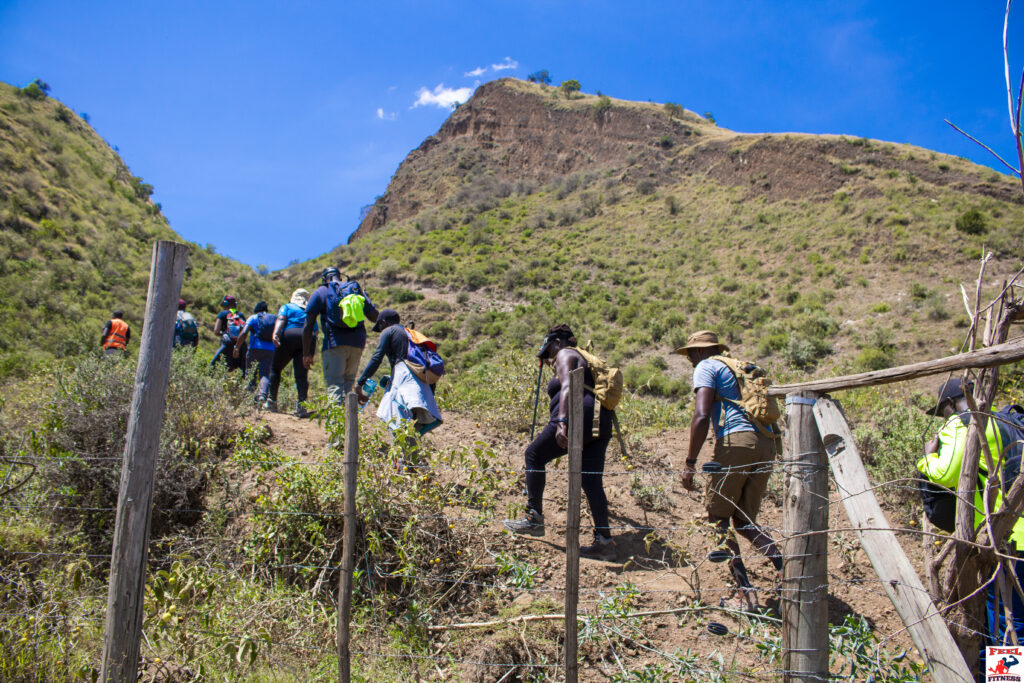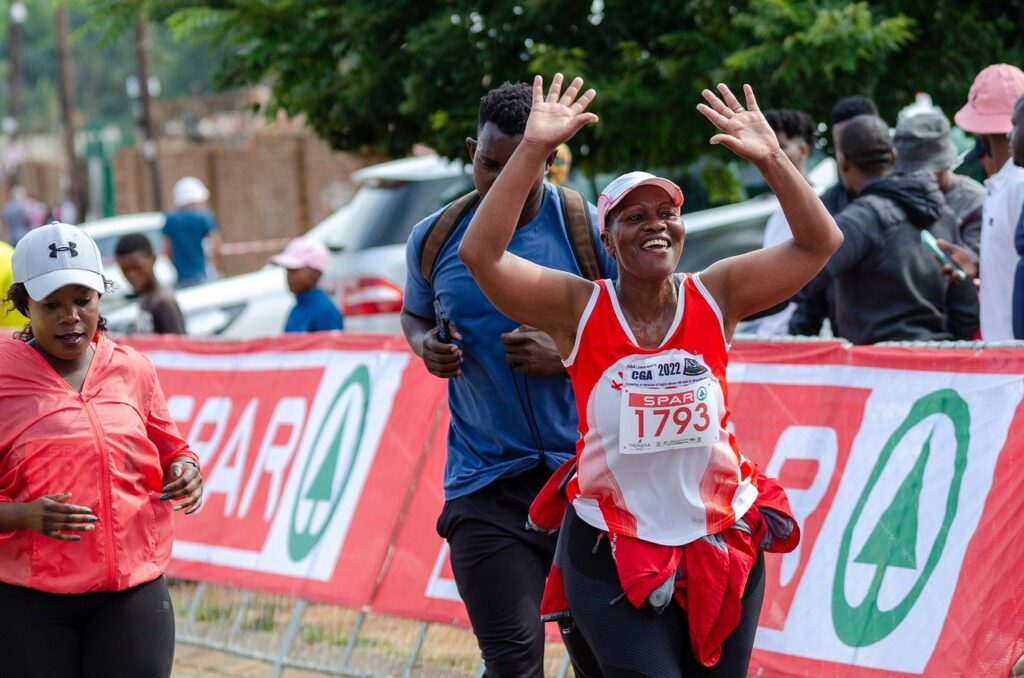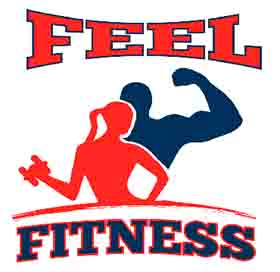Meet John. At sixty-five, he was a ticking time bomb of bad health: 100 pounds overweight, high cholesterol, high blood pressure, and low energy, fueled by stress and junk food. Retirement loomed, but instead of relief, it brought anxiety—though, to be fair, he wasn’t exactly in love with his job. John was in dreadful shape, both physically and mentally. Sound familiar? Let’s just say he wasn’t winning any “golden years” awards!
John and his wife moved to Malindi, landing a spot just a block from the beach. I brought up exercise, but John shut me down fast: “I’m no athlete, never was, never will be.” “Fair,” I said, “but doing nothing might have you meeting your maker sooner than planned.” That got his attention. He grudgingly agreed to walk the beach once a day—six days a week. Baby steps. A great place to start your fitness climb.
He Gave it a shot.
On day one, John managed a proud 400 meters—basically a lap around a football field—and felt good about it. But by morning, he woke up feeling like he’d gone 12 rounds with a truck. Everything hurt, and getting out of bed was an Olympic event.
Here’s the kicker: John showed up anyway. With a grimace, a prayer, and a couple of painkillers, he dragged himself to the beach. Day two? Half a kilometer. Exhausted. Day three? Same routine. Slowly but surely, the man kept at it, puffing like a kettle but moving forward.
Fast-forward a few months, and John was strolling a full kilometer through that soft sand like he owned it—feeling fitter, happier, and maybe even a little smug. Who knew retirement could be a walk on the beach…literally?

He Feels Great Today.
John’s daily beach walks started working their magic. His energy soared, his taste buds upgraded to real food, and he actually got excited about his new life in Malindi. A year later, he strutted back to Nairobi for his checkup like a new man.
“Phil, I’m walking five kilometers a day, seven days a week!” he declared. He’d shed 35 pounds, his cholesterol and blood pressure were playing nice, and he looked a solid decade younger. The guy was glowing—literally glowing. Today, he’s still crushing it. Turns out, the fountain of youth might just be a sandy stretch in Malindi! or wherever you decide to retire, just keep moving.
Don’t feel like an idiot if you can barely stay on the treadmill for fifteen minutes at low speed the first day. It is not struggling on the first day or the thirtieth or sixtieth that’s going to work. It’s showing up every day and doing something. Do something every day for a week, and at week’s end you’ll be doing twenty minutes. Or thirty. Whatever. Push yourself a little. Don’t push yourself over the edge if you want to stay young. Before too long, you should get up to doing forty-five minutes a day of aerobic exercise. Be encouraged by John’s example.
Coach Phil.
The Master Athlete.
Now let’s talk about Angela. At sixty, she was a seasoned endurance athlete who’d crushed marathons, triathlons, and countless hiking trails. Her husband, Alphonse, was no slouch either—a fellow athlete and her partner in victory at multiple events. Together, they were the ultimate power couple of endurance sports.
But by the big six-oh, Angela hit a crossroads. She started doubting if she should keep pushing her limits. “Should I hang up my running shoes?” she asked. My answer? A very loud nope!
Fueled by that pep talk, Angela tackled her training with the kind of fire you’d expect from someone who’s outrun half the field in life—and then some. She’s proof that age is just a number, and endurance athletes don’t retire; they just find longer trails to conquer.

A Structured Exercise Program.
For Angela, this meant diving into a well-structured exercise program tailored for Masters marathon races. She was logging an impressive 70 minutes a day of intense aerobics and strength training—and crushing it. By sixty-one, she snagged fourth place in her latest event and hasn’t looked back since. Today, she’s easily one of the fittest women her age in the country, proving age is just another finish line to cross.
Now, let’s be clear: this article isn’t for the Angelas of the world. But next time you’re worried you might be overdoing it, just remember—you’re probably miles away from catching up to her. So, breathe easy and keep going!
Is Exercise a cure for all?
Here’s a fun fact about Angela: in her fifties, she battled some serious illnesses. Yep, even someone who could probably bench-press most of us got sidelined. “How’s that fair?” you might ask. “If exercise is such a miracle cure, why did she get sick?”
Well, welcome to the randomness of life. Sometimes, the universe just deals you a weird hand. Genetics plays a role—though probably less than your family likes to blame at holiday dinners. And then there’s plain old bad luck. Yep, bad luck, the joker card of health. Moral of the story? Stay active, stay optimistic, but don’t expect to out-squat fate entirely. It’s got a wicked sense of humor too!
But the point is, following a proper exercise regimen enormously improves the chances of good health and a great life. I mean improves them by 70 percent. You don’t get a guarantee—you still have a shot at picking up a fatal case of this or that—but 70 percent is not too shabby. There is not a pill or a course of treatment in all of medicine that comes anywhere near that.
Younger Next Year-Chris Crowley.
The Guy Who Loved to Bike.
Find Something You can Do.
When Phil and I first met, I was in decent shape—definitely better than John, better than most of Phil’s clients—but light-years away from athletic beasts like Angela. Phil suggested spinning, so I gave it a shot. Picture this: me, in a room with 20-30 people pedaling furiously on stationary bikes, blasting music, and a hyper-enthusiastic leader yelling like we were escaping from an Nairobi maandamano aka demonstration.
I already enjoyed biking, and spinning sounded like a solid workout. Plus, if I was going to survive Phil’s fitness commandments, I needed something I could squeeze into my daily routine without it feeling like a full-time job. So, spinning it was. And let’s just say the first few sessions taught me muscles I didn’t even know existed!

Join A Group Class.
Spinning might just be the answer to my fitness woes, so here I am. I’ve signed up for a year at a gym, an investment my wallet isn’t thrilled about. Clutching the spin class schedule, I’m battling six-thirty a.m. nerves and a desire to disappear.
I’m not exactly feeling like a cycling pro. The dazzling instructor, who could easily be the star in a James Bond movie, spots me struggling and comes to my rescue. “Let me show you how this works,” she says with unnerving enthusiasm. The bike is no ordinary machine; it’s a beast with a massive flywheel and a knob that controls the resistance. Starting feels like moving a boulder, and stopping is a saga of its own. For a moment, I ask myself what I got myself into.
But here I am, pedaling and still upright. Maybe this is the start of something great—or at least some very sore muscles. All the same I am glad I started.
Don’t be Intimidated.
The room fills with beautiful creatures in their twenties and thirties. One or two seniors, but no one as old as I am. The music starts . . . a song with a heavy, compulsive beat. The instructor has a mike, and she starts telling us how to pedal . . . how fast and with how much resistance. My hearing has gone to hell, but I follow as best I can. Speed up, slow down. Tighten or ease the resistance with a knob on the frame. I do not fall off, but I feel as if I could. And I do not break my leg trying to slow the damn flywheel, but I know I could do that. “Out of the saddle!” the instructor shouts, and everyone stands up, pumping like crazy. “Resistance!” she shouts, and everyone takes a turn to the right on the resistance knob. My quadriceps, which I thought were strong, start to scream. How many seconds can this go on? Actually, it goes on for about three minutes, but I don’t.
Stay Until The End.
Did I mention that the walls are all mirrors? Well, they are, and I have just caught sight of my own face. I am so frightened that I sit down. (The instructors often urge novices not to stand for long.) After that, I only do some of the things the instructor says to do. But I hang, man. I stay there until the end, all forty-five minutes of it. There are stretching exercises when it’s finally over. As I staggered out of the room at the end, the instructor comes up and says, “Nice going. First time?” “How could you tell?” I give her a smile. She just nods and says again, “Nice going.” I stumble home, bathe and go to bed. It is now 7:45 A.M., and my day is over.
It is good that I’m retired; I could not go to work like this. Okay, spinning was a bit intense, but the beauty of it—for a person of my ridiculous temperament—is that it caught my attention. It was hard. It was interesting. It was a challenge. And, with a touch of dread, I went back the next day. And every day for a long time after that. I’ve been doing it for years now, and I still get a kick out of it. And I’m in very, very good shape, at least for a guy who loves to eat and drink and is congenitally unathletic.
Client Anonymous.
Do What is Heavy for You.
I sometimes feel guilty for not doing more, but from Phil’s more rational perspective, I am one of the success stories. He says I’ve probably achieved about 70 percent of my potential fitness (as opposed to him, at probably 98 percent or Faith Kipyegon, who is 110 percent), but that’s fine. That’s as far as I’m going. I can do everything I want to, and I feel great almost all the time. Gotta love that. The point of all this is that there is a range of approaches to aerobics. I do not urge you to go out and push yourself to the point of burning out on the first day. But I do urge you to get into pretty heavy aerobics eventually. Remember, that walk in the sand in Malindi was heavy for John. You have to do what’s heavy for you.
There is a Range of Approaches to Aerobics-Start Slow.
My early spin regimen would have been too easy for Angela, too hard for most adults in their sixties and near-fatal for John. Phil and I are now of one mind on how to start. Start slow. Slower than feels good. But hold at that level only until you get your feet under you. Take it up as you get more comfortable. Feel your way, feel your fitness but eventually give yourself a little push. Don’t go so slow that you get bored. Get heavy for you, but only after you’ve been at it for a few weeks and feel comfortable. You’ll know.
Start slow. Slower than feels good. But hold at that level only until you get your feet under you. Take it up as you get more comfortable. Feel your way, feel your fitness but eventually give yourself a little push. Don’t go so slow that you get bored.
Coach Philip.
Are you a John, an Angela or the guy who loved the spin class? Make a realistic assessment of the shape you are in today and then make a start that fits your condition. Whether you are retired or not, it’s a lot easier to exercise if you have a regular time. The best trick is to have a schedule and a habit.

